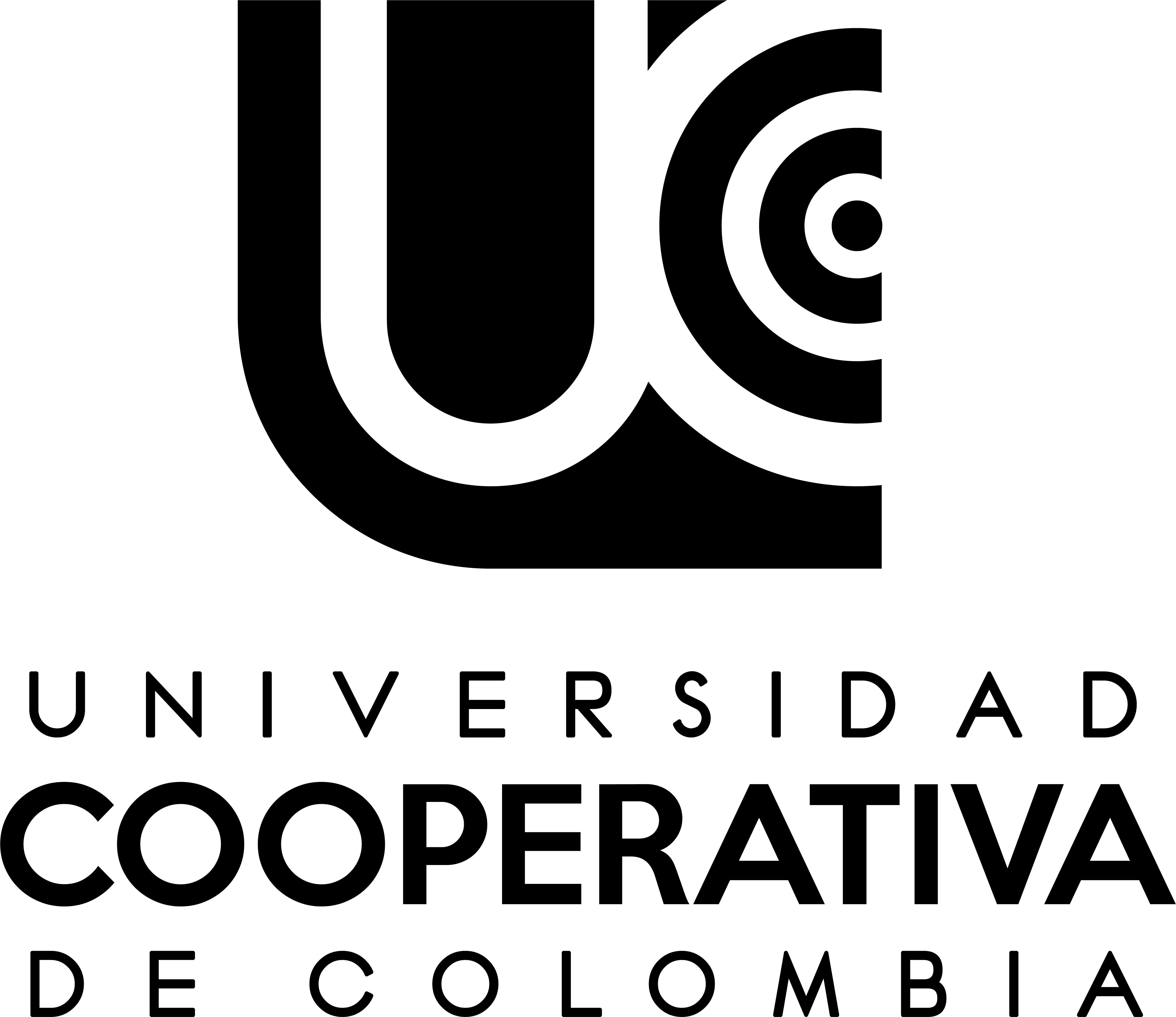Control of Oral Hygiene in Patients with Orthodontia

Universidad Cooperativa de Colombia
email: revista.odontologia@ucc.edu.co

Universidad CES
Odon. Period.
email: revista.odontologia@ucc.edu.co
Orthodontic treatment with fixed appliances alters the oral environment, increases plaque accumulation, changes the com- position of the flora, and complicates cleaning for the patient. Gingivitis and white spot lesions around fixed appliances are frequent side effects when preventive programs have not been implemented. The patients need more professional guidance in selecting the most appropriate oral health products and procedures for their individual needs and this is the dental professional’s responsibility.
Alves de Souza R, Borges de Araujo Magnani MB, Nouer DF, Oliveira da Silva C, Klein MI, Sallum EA et al. Periodontal and microbiologic evaluation of 2 methods of archwire ligation: ligature wires and elastomeric rings. Am J Orthod Dentofacial Orthop. 2008; 134(4): 506-12.
Yeung SC, Howell S, Fahey P. Oral hygiene program for orthodontic patients. Am J Orthod Dentofacial Orthop. 1989; 96(3): 208-13.
Listgarten M. The structure of dental plaque. Periodontol 2000. 1994; 5:14.
Shibly O, Rifai S, Zambon JJ. Supragingival dental plaque in the etiology of oral diseases. Periodontol 2000. 1995; 8: 42-59.
Costa MR, Da Silva VC, Miqui MN, Colombo AP, Cirelli JA. Effects of ultrasonic, electric, and manual toothbrushes on subgingival plaque composition in orthodontically banded molars. Am J Orthod Dentofacial Orthop. 1976; 137(2): 229-35.
Marsh PD. Dental plaque as a microbial biofilm. Caries Res. 2004; 38(3): 204-11.
Turkkahraman H, Sayin MO, Bozkurt FY, Yetkin Z, Kaya S, Onal S. Archwire ligation techniques, microbial colonization, and periodontal status in orthodontically treated patients. Angle Orthod. 2005; 75(2): 231-6.
Huser MC, Baehni PC, Lang R. Effects of orthodontic bands on microbiologic and clinical parameters. Am J Orthod Dentofacial Orthop. 1990; 97(3): 213-8.
Chin MY, Busscher HJ, Evans R, Noar J, Pratten J. Early biofilm formation and the effects of antimicrobial agents on orthodontic bonding materials in a parallel plate flow chamber. Eur J Orthod. 2006; 28(1): 1-7.
Acharya S, Goyal A, Utreja AK, Mohanty U. Effect of three different motivational techniques on oral hygiene and gingival health of patients undergoing multibracketed orthodontics. Angle Orthod. 2011; 81(5): 884-8.
Kim K, Heimisdottir K, Gebauer U, Persson GR. Clinical and microbiological findings at sites treated with orthodontic fixed appliances in adolescents. Am J Orthod Dentofacial Orthop. 2010; 137(2): 223-8.
Zachrisson BU. Gingival condition associated with orthodontic treatment. II. Histologic findings. Angle Orthod. 1972; 42(4): 353-7.
Zachrisson S, Zachrisson BU. Gingival condition associated with orthodontic treatment. Angle Orthod. 1972; 42(1): 26-34.
Boyd RL, Baumrind S. Periodontal considerations in the use of bonds or bands on molars in adolescents and adults. Angle Orthod. 1992; 62(2): 117-26.
Ay ZY, Sayin MO, Ozat Y, Goster T, Atilla AO, Bozkurt FY. Appropriate oral hygiene motivation method for patients with fixed appliances. Angle Orthod. 2007; 77(6): 1085-9.
Demling A, Heuer W, Elter C, Heidenblut T, Bach FW, Schwestka-Polly R et al. Analysis of supra- and subgingival long-term biofilm formation on orthodontic bands. Eur J Orthod. 2009; 31(2): 202-6.
Scannapieco FA. Monitoring the efficacy of plaque control methods. Periodontol 2000.1995; 8: 24-41.
Sbordone L, Bortolaia C. Oral microbial biofilms and plaque-related diseases: microbial communities and their role in the shift from oral health to disease. Clin Oral Investig. 2003; 7(4): 181-8.
Teles RP, Teles FR. Antimicrobial agents used in the control of periodontal biofilms: effective adjuncts to mechanical plaque control? Braz Oral Res. 2009; 23(Suppl 1): 39-48.
Thornberg MJ, Riolo CS, Bayirli B, Riolo ML, Van Tubergen EA, Kulbersh R. Periodontal pathogen levels in adolescents before, during, and after fixed orthodontic appliance therapy. Am J Orthod Dentofacial Orthop. 2009; 135(1): 95-8.
Zachrisson BU, Alnaes L. Periodontal condition in orthodontically treated and untreated individuals. II. Alveolar bone loss: radiographic findings. Angle Orthod. 1974; 44(1): 48-55.
Pellegrini P, Sauerwein R, Finlayson T, McLeod J, Covell DA, Jr., Maier T et al. Plaque retention by self-ligating vs elastomeric orthodontic brackets: quantitative comparison of oral bacteria and detection with adenosine triphosphate-driven bioluminescence. Am J Orthod Dentofacial Orthop. 2009; 135(4): 426 e1-9; discussion -7.
Al Mulla AH, Kharsa SA, Birkhed D. Modified fluoride toothpaste technique reduces caries in orthodontic patients: A longitudinal, randomized clinical trial. Am J Orthod Dentofacial Orthop. 2010; 138(3): 285-91.
Uysal T, Akkurt MD, Amasyali M, Ozcan S, Yagci A, Basak F et al. Does a chitosan-containing dentifrice prevent demineralization around orthodontic brackets? Angle Orthod. 2011; 81(2): 319-25. [25] Marsh PD. Dental plaque as a biofilm and a microbial community - implications for health and disease. BMC Oral Health. 2006; 6(Suppl 1): S14.
Tufekci E, Casagrande ZA, Lindauer SJ, Fowler CE, Williams KT. Effectiveness of an essential oil mouthrinse in improving oral health in orthodontic patients. Angle Orthod. 2008; 78(2): 294-8.
Bergstrand F, Twetman S. A review on prevention and treatment of post-orthodontic white spot lesions - evidence-based methods and emerging technologies. Open Dent J. 2012; 5: 158-62.
Garcia-Godoy F, Hicks MJ. Maintaining the integrity of the enamel surface: the role of dental biofilm, saliva and preventive agents in enamel demineralization and remineralization. J Am Dent Assoc. 2008; 139 Suppl: 25S-
S.
Sudjalim TR, Woods MG, Manton DJ. Prevention of white spot lesions in orthodontic practice: a contemporary review. Aust Dent J. 2006; 51(4): 284-9; quiz 347.
Robertson MA, Kau CH, English JD, Lee RP, Powers J, Nguyen JT. MI Paste Plus to prevent demineralization in orthodontic patients: a prospective randomized controlled trial. Am J Orthod Dentofacial Orthop. 2011; 140(5): 660-8.
Willmot DR. White lesions after orthodontic treatment: does low fluoride make a difference? J Orthod. 2004; 31(3): 235-42; discussion 02.
Baker KA. The role of dental professionals and the patient in plaque control. Periodontol 2000. 1995; 8: 108-13.
Arici S, Alkan A, Arici N. Comparison of different toothbrushing protocols in poor-toothbrushing orthodontic patients. Eur J Orthod. 2007; 29(5): 488-92.
Cancro LP, Fischman SL. The expected effect on oral health of dental plaque control through mechanical removal. Periodontol 2000. 1995; 8: 60-74.
Eley BM. Antibacterial agents in the control of supragingival plaque. A review. Br Dent J. 1999; 186(6): 286- 96.
Rafe Z, Vardimon A, Ashkenazi M. Comparative study of 3 types of toothbrushes in patients with fixed orthodontic appliances. Am J Orthod Dentofacial Orthop. 2006; 130(1): 92-5.
Hickman J, Millett DT, Sander L, Brown E, Love J. Powered vs manual tooth brushing in fixed appliance patients: a short term randomized clinical trial. Angle Orthod. 2002; 72(2): 135-40.
Kaklamanos EG, Kalfas S. Meta-analysis on the effectiveness of powered toothbrushes for orthodontic patients. Am J Orthod Dentofacial Orthop. 2008; 133(2): 187 e1-14.
Heasman P, Wilson Z, Macgregor I, Kelly P. Comparative study of electric and manual toothbrushes in patients with fixed orthodontic appliances. Am J Orthod Dentofacial Orthop. 1998; 114(1): 45-9.
Thienpont V, Dermaut LR, Van Maele G. Comparative study of 2 electric and 2 manual toothbrushes in patients with fixed orthodontic appliances. Am J Orthod Dentofacial Orthop. 2001; 120(4): 353-60.
Poyato-Ferrera M, Segura-Egea JJ, Bullon-Fernandez P. Comparison of modified Bass technique with normal toothbrushing practices for efficacy in supragingival plaque removal. Int J Dent Hyg. 2003; 1(2): 110-4.
Slot DE, Dorfer CE, Van der Weijden GA. The efficacy of interdental brushes on plaque and parameters of periodontal inflammation: a systematic review. Int J Dent Hyg. 2008; 6(4): 253-64.
Terezhalmy GT, Bartizek RD, Biesbrock AR. Plaqueremoval efficacy of four types of dental floss. J Periodontol. 2008; 79(2): 245-51.
Dorfer CE, Wundrich D, Staehle HJ, Pioch T. Gliding capacity of different dental flosses. J Periodontol. 2001; 72(5): 672-8.
Choo A, Delac DM, Messer LB. Oral hygiene measures and promotion: review and considerations. Aust Dent J. 2001; 46(3): 166-73.
Ciancio SG. Chemical agents: plaque control, calculus reduction and treatment of dentinal hypersensitivity. Periodontol 2000. 1995; 8: 75-86.
Olympio KP, Bardal PA, De MBJR, Buzalaf MA. Effectiveness of a chlorhexidine dentifrice in orthodontic patients: a randomized-controlled trial. J Clin Periodontol. 2006; 33(6): 421-6.
Oltramari-Navarro PV, Titarelli JM, Marsicano JA, Henriques JF, Janson G, Lauris JR et al. Effectiveness of 0.50% and 0.75% chlorhexidine dentifrices in orthodontic patients: a double-blind and randomized controlled trial. Am J Orthod Dentofacial Orthop. 2009; 136(5): 651-6.
Fard BK, Ghasemi M, Rastgariyan H, Sajjadi SH, Emami H, Amani M et al. Effectiveness of Mouth Washes on Streptococci in Plaque around Orthodontic Appliances. isrn Dent. 2011; 954053.
Benson PE, Shah AA, Millett DT, Dyer F, Parkin N, Vine RS. Fluorides, orthodontics and demineralization: a systematic review. J Orthod. 2005; 32(2): 102-14.
Every single author of the articles has to declare that is an original unpublished work exclusively created by them, that it has not been submitted for simultaneous evaluation by another publication and that there is no impediment of any kind for concession of the rights provided for in the contract.
In this sense, the authors committed to await the result of the evaluation by the journal Revista Nacional de Odontologia before considering its submission to another medium; in case the response by that publication is positive, additionally, the authors committed to respond for any action involving claims, plagiarism or any other kind of claim that could be made by third parties.
At the same time, the authors have to declare that they are completely in agreement with the conditions presented in their work and that they cede all patrimonial rights. These rights involve reproduction, public communication, distribution, dissemination, transformation, making it available and all forms of exploitation of the work using any medium or procedure, during the term of the legal protection of the work and in every country in the world, to the Universidad Cooperativa de Colombia Press.
Most read articles by the same author(s)
- Ana María Quintero, Bibiana Escobar, Natalia Vélez Trujillo, The cephalic radiograph , Revista Nacional de Odontología: Edición especial en Ortodoncia








